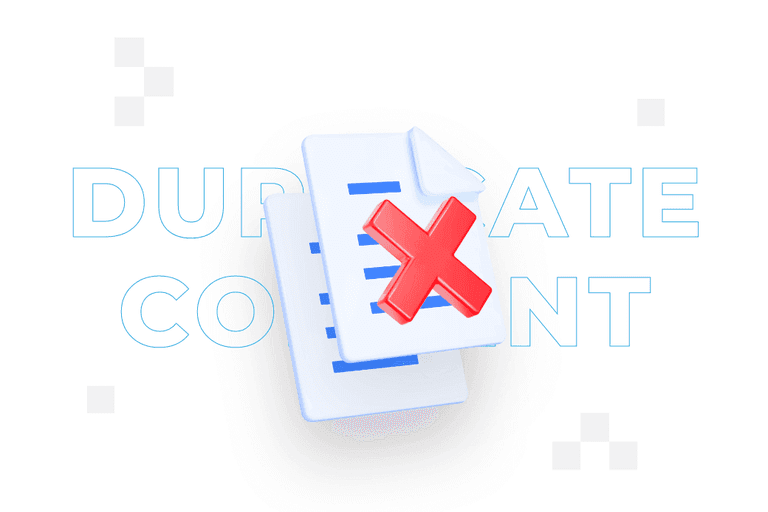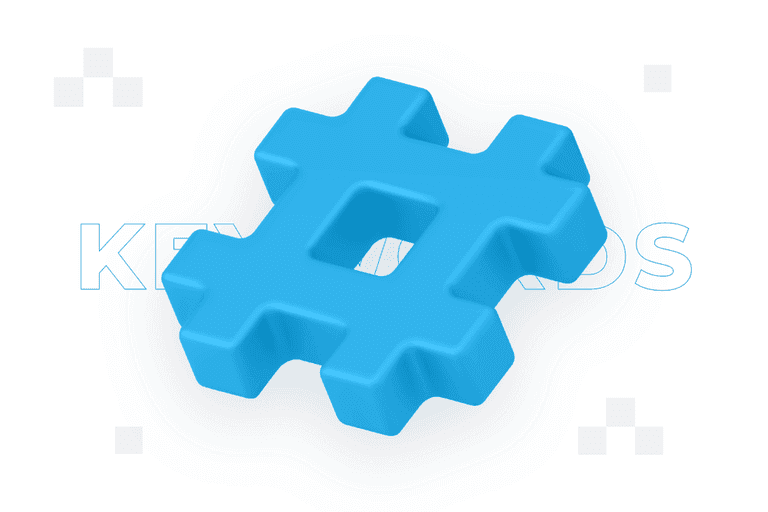
Duplicate content – what is it and how to eliminate it?

Duplicate content is a challenge for many website owners, negatively impacting SEO and search engine visibility. Understanding its nature and how to prevent it is key to online success.
From this article you will learn:
- What is duplicate content?
- Why is duplicate content created?
- How to detect duplicate content?
- How to eliminate duplicate content?
- How to avoid duplicate content?
- What are the consequences of duplicate content?
Duplicate content – definition
Duplicate content is a phenomenon that occurs when identical or very similar content is available in multiple places on the internet, on the same or different pages. This can be caused by a variety of factors, such as content being copied by different sites, technical errors or a lack of proper redirects on a page, and certainly negatively affects the positioning of pages in search results.
Avoiding duplicate content is important as it can affect search engine rankings, so it is worth remembering that there are many types of duplicate content:
- Internal duplicates occur within a single site. It can be about different URLs leading to the same content caused by URL parameters, sessions, web and non-www versions or the HTTP and HTTPS protocol. Other examples include printable versions of pages and duplicate category paths (the same product is available in different categories).
- External duplicates occur when other sites copy and paste content from other sites without adding value or reference to the source.
- Technical problems can also lead to duplicates. Examples include duplicate metatags, scripts or CSS styles, which are treated as duplicate content by search engines.
- CMS platforms (content management systems) can generate duplicates, for example by automatically creating pages for each tag or category.
Duplicate content can be a problem as search engines, such as Google, seek to offer users differentiated results, which can result in pages with duplicate content being demoted in search results.
Duplicate content is content that appears online in more than one place, which can lead to indexing and search engine ranking problems for sites.
Definition of duplicate content
Furthermore, it can lead to confusion as to which site is the original source of the content. However, it is worth noting that it is not always the result of rogue sites; sometimes it can be the unintentional result of errors in site configuration.
Reasons for duplicate content
Duplicate content can arise for a variety of reasons, both intentional and accidental:
- Websites can often have versions with and without ‘www’, or ‘http’ and ‘https’ versions that lead to the same content.
- Dynamically generated URLs, often with session or tracking parameters, can lead to the same page.
- 302 redirects used instead of 301 redirects.
- CMS-related issues such as automatic page creation for tags, categories or archives, leading to the same content appearing multiple times, or content being inserted into multiple categories or locations within the site.
- Scraping, which is the automatic copying and publishing of content from other sites.
- The same content may be available in different languages but inappropriately labelled, leading to the perception of duplication.
- Duplicate content in different sections of a site for no apparent reason or without using appropriate canonical tags.
- When one site is available under multiple domains and the correct redirects are not set up.
- Some sites offer printable versions of content that are available at a different URL but have the same content.
- Affiliate partners often use the same product description content, leading to duplication across multiple sites.
- When online shops use the underlying product content provided by suppliers or manufacturers, this leads to duplication of product descriptions on different sites.
- Sometimes editors or content creators may inadvertently publish the same material on different sites, especially in large organisations where many people have access to publish content.
- In some cases, sites may have separate versions for mobile and desktop devices that contain the same content, but are accessible at different URLs.
- When documents, such as PDFs, are available at different locations on a site and are indexed by search engines, duplication of content can occur.
- In some cases, sites may quote large chunks of content from other sources, which can be seen as duplicate content, although it is used in the right context.
Detecting duplicate content
Detecting duplicate content is a key part of an SEO strategy. One of the most popular tools used for this purpose is Google Search Console. Through this service, Google informs site owners of potential duplicate content issues that have been detected during a site scan, allowing them to fix problems with duplicate content.
Another useful tool is Copyscape, which scans the internet for content that is identical or very similar to the content provided by the user. This allows you to check that content from your site has not been copied elsewhere on the web. Also, SEO auditing tools such as Screaming Frog or Semrush offer duplicate content detection functions by analysing the structure of the site and comparing content on different pages.
There are also several manual methods for detecting duplicates. One way is to paste a piece of content into quotes in a Google search to identify where else on the internet the same phrase appears. You can also check different versions of a site’s URL (e.g. with and without ‘www’, or ‘http’ and ‘https’ versions) to see if they lead to the same content. It is also worth noting the structure of the site and considering whether there are places where content could be duplicated, for example in different categories or tags.
Eliminating duplicate content
Eliminating duplicate content is an important step in SEO. Here are the main methods for eliminating duplicate content:
- Canonical tags (rel=canonical) allow you to specify which version of the content is ‘canonical’ or preferred. By placing a canonical tag on a duplicate page, you indicate to search engines which version is primary and should be indexed.
- 301 redirects are used when one page has been moved to a different URL. It informs search engines that the page has been permanently moved to the new address, while also transferring ranking power to it.
- Noindex tags are used when a site owner does not want a certain page to be indexed by search engines, but does not want to remove it – with this tag, the page will still be available to users, but search engines will not index it.
- Rather than deleting or blocking duplicates, the duplicates can be transformed by creating unique content. This can include rewriting, adding additional information or tailoring the content to a specific audience.
- You can configure how Google interprets different parameters in URLs, which can help to eliminate problems with duplicates generated by parameters.
- The use of the hreflang tag works well for multilingual sites – it informs search engines of the language and regional targeting of content, helping to avoid duplicate issues between language versions.
- Often, session parameters or other variables generate duplicates. In such cases, it is worth considering server or CMS configuration to reduce the number of URLs.
- Many content management systems have options to help manage duplicates, for example by blocking the indexing of specific categories or tags.
- Making sure your site has a logical and consistent structure can help avoid unnecessary duplication of content.
- SEO tools can help to regularly detect and fix duplicate content. Systematic audits can detect and react to problems early.
- The use of a robots.txt file, while not ideal for permanently removing duplicate content, can temporarily block search engine robots from accessing specific sections of your site that may be generating duplicates.
- Ensuring that all internal links direct to canonical versions of pages, rather than potential duplicates, can help consolidate ranking power and eliminate the problem.
- For online shops, take advantage of features offered by e-commerce platforms such as WooCommerce or Shopify, which can help eliminate duplicates, such as allowing one product to be set up in multiple categories without creating duplicates.
- If the site offers printable versions of pages, consider using noindex tags or making sure they are unreachable by search engine robots.
- If the content is distributed through partners or affiliates, it is worth engaging in a dialogue with them to establish guidelines for content uniqueness or the use of appropriate canonical tags.
Even once the problem has been resolved, it is worth remaining vigilant, as changes in technology, CMS updates or new content can introduce new challenges.
Avoiding duplicate content
Avoiding duplicate content is key to maintaining your site’s health and visibility in search results. The first step is to understand what triggers duplicate content – regular SEO audits help with this. It’s also worth paying attention to the content you publish on other sites or platforms. If you distribute your articles or posts to different sites, make sure they are unique or link to the original source.
When you’re adding new content to a site, consider whether it’s too similar to what you’ve already published before – using plagiarism checking tools can be helpful. Alongside this, take care of internal linking consistency. Make sure you are linking to one canonical version of the page and not to different versions of the same URL.
Consequences of duplicate content
The consequences of duplicate content in terms of SEO and the overall visibility of your site on the web can be serious. In the first instance, search engines may struggle to distinguish which version of the content is most relevant and relevant to the user, leading to uncertainty in choosing the right page to display in search results. Search engines may also disperse the value of links between different versions of a page, so none of them gains full ranking power, which can lead to lower traffic and fewer conversions.
Continuous indexing of duplicates can be interpreted as an attempt to manipulate search results, so in extreme cases sites may even be penalised with a drop in ranking or removal from the index altogether. Duplicate content can also affect a site’s credibility and reputation in the eyes of users – if a visitor encounters the same content in multiple places, they may begin to question the authenticity and value of the source.
In the context of overseas SEO, the presence of duplicates can mislead search engine algorithms as to which version is relevant to which country or region, which can lead to inappropriate targeting of content for users from different regions.
FAQ
Contact form
Develop your brand
Rate content:
You may be interested in:





